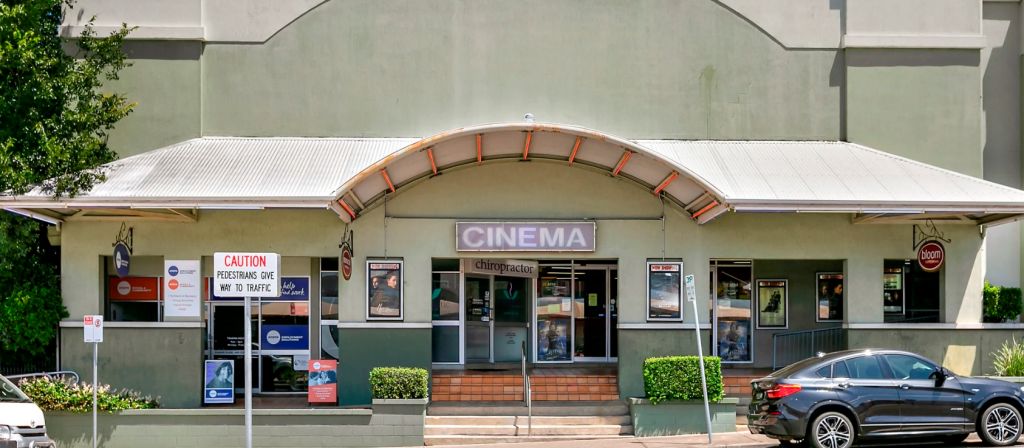
In the age of Netflix, regional cinemas are still a hot investment
Online streaming platforms and on-demand entertainment are meant to be killing cinemas, but that’s certainly not the case in regional towns where more screens are being added and box office takings are up.
This is also creating demand for these cinemas, which rarely come on the market.
One such cinema in Gympie, north of Brisbane, was sold recently by Ray White Commercial Noosa and Sunshine Coast North agent Louisa Blennerhassett to a private-investor family for $900,000, after receiving strong interest from buyers in the south-east Queensland region and beyond.
“Realistically, we’ve been saying that TV was going to kill the cinema for years, and it didn’t happen,” she said.
 Listing agent Louise Blennerhassett said that families in regional towns still relied on the local cinema for weekend entertainment. Photo: Supplied
Listing agent Louise Blennerhassett said that families in regional towns still relied on the local cinema for weekend entertainment. Photo: Supplied
In regional towns in particular, families with little else to do on a Friday or Saturday night are still turning to the big screen.
“People always want an excuse get out of the home, particularly in regional areas,” Ms Blennerhassett said.
This made them popular businesses to invest in, especially independent cinemas.
“It’s nearly impossible to buy one, because most cinemas are part of a shopping complex,” she said.
The latest statistics from Screen Australia show the popularity of cinemas, but also the increasing rarity of small theatres, outside the big smoke.
Although the share of Australia’s movie theatres located in ‘country’ areas – Screen Australia counts this as anywhere outside of Sydney, Melbourne, Brisbane, Adelaide and Perth – fell from 54 per cent in 1985 to 40 per cent in 2018, the number of screens in rural areas is actually on the rise.
There were 921 cinema screens in country areas in 2018, up from 805 in 2008 and 600 in 1998.
The cinema box office in Australia brought in $1.245 billion in 2018 – the second highest annual profit ever – according to the Motion Picture Distributors Association of Australia.
It’s a similar story in Hollywood, where there are rumours that even Netflix might be getting into the cinema business, with rumours it will make a tilt for the iconic Egyptian Theatre on Hollywood Boulevard.
The US cinema box office is expected to grow about 1 per cent in 2019, to a record $12 billion, with industry analysts playing down the impact of Netflix and other streaming services.
“Our takeaway is that Netflix and the expansion of [streaming] platforms will have minimal impact on box office given the vast supply of content, plenty of which is ideal for theatrical release,” analyst Michael Pachter, at Wedbush Securities, wrote in a recent research note.
Initially offered for sale by auction, the Gympie Cinema sold several days later, on a yield of 8.8 per cent.
Ms Blennerhassett said that there had been three bidders on the day, with several interested parties making approaches following the auction.
The property was the first “sizeable tenanted asset [to be offered] in Gympie in a long time” and was being offloaded by the original owner, who developed the complex nearly 30 years ago.
With an established operator recently starting a new five-year lease, with a further five-year option, Ms Blennerhassett said that the new owner had no plans to change the building’s purpose.
Although a rare occurrence, the Gympie Cinema isn’t the only regional cinema to change hands in recent years.
Wallis Cinema Group purchased a cinema complex in the regional Victorian town of Mildura in 2017 for an undisclosed sum, adding to their portfolio of five properties spanning regional and metro locations in South Australia.
The Adelaide-based group’s marketing manager, Paul Besenko, said that demand from regional cinema-goers remained strong, with the group receiving “strong support” from the Mildura community and “improved box office takings” since taking over.
“Regional cinemas are doing very well. Metro cinemas aren’t doing as well, but that’s only because of cannibalisation – the big players coming in and taking over,” Mr Besenko said.
He said that while returns varied widely based on the reception to different film releases, the overarching industry trend pointed to increased patronage and revenue.
“It’s an activity that appeals to all age groups,” he said.











